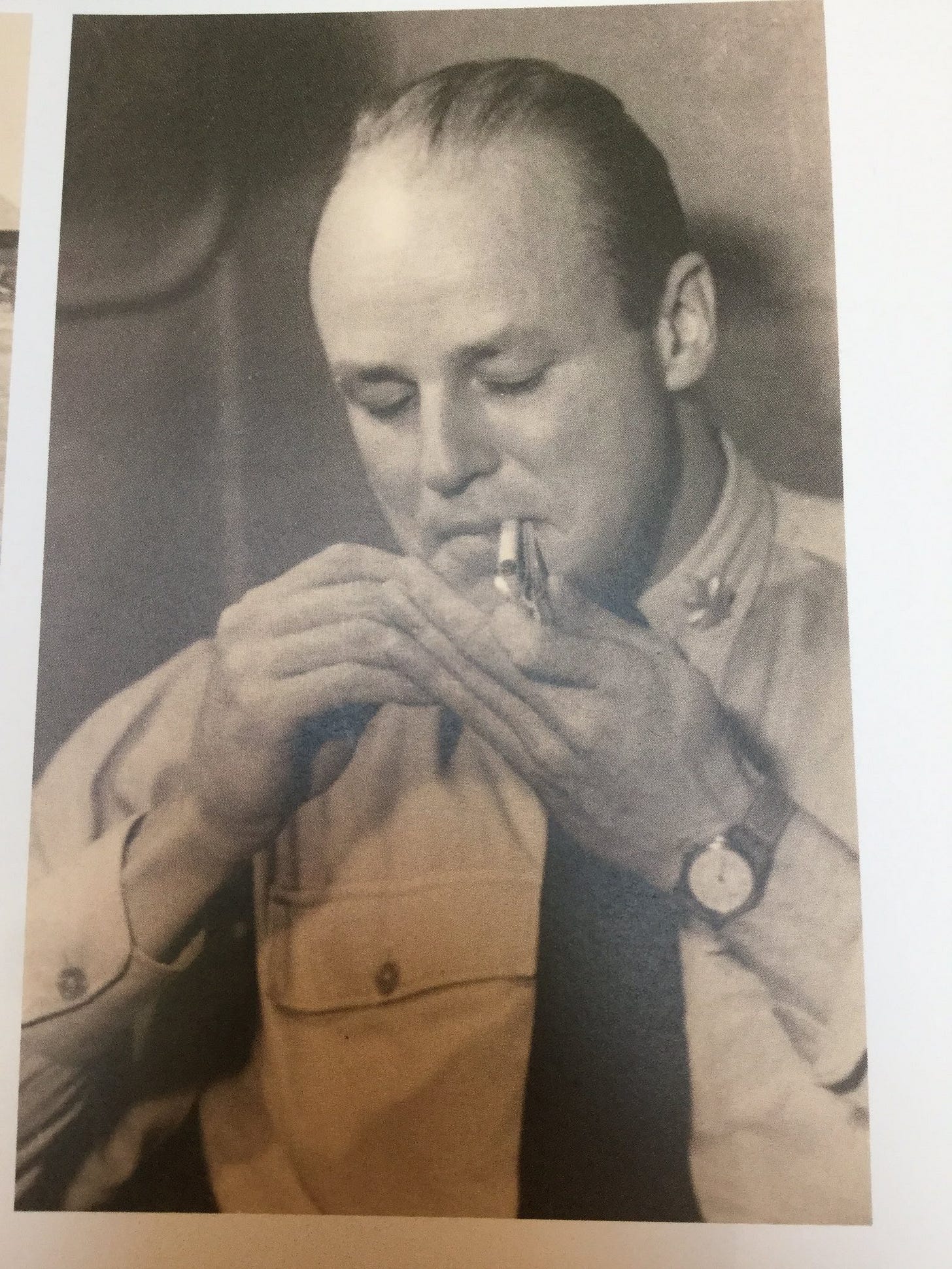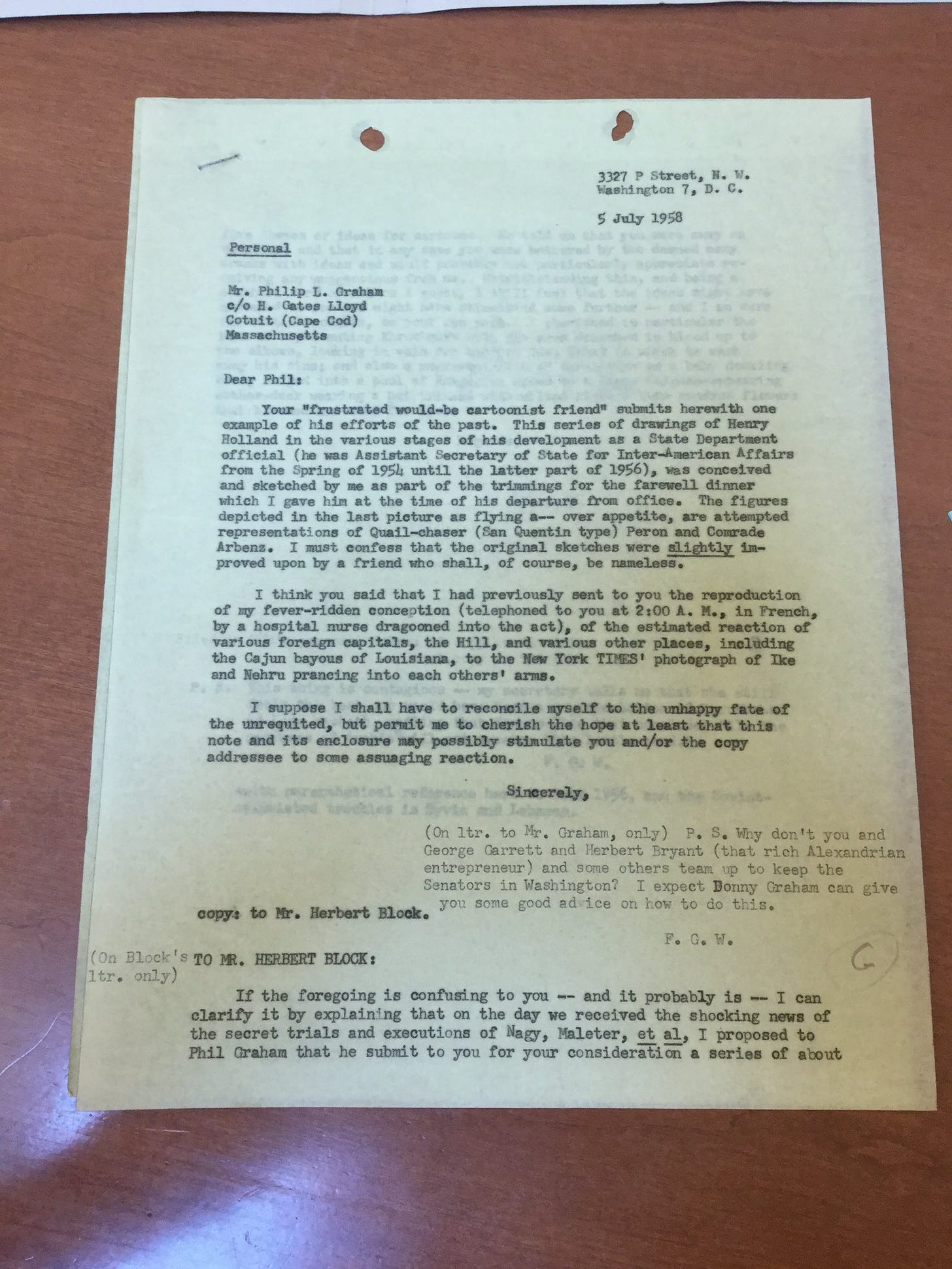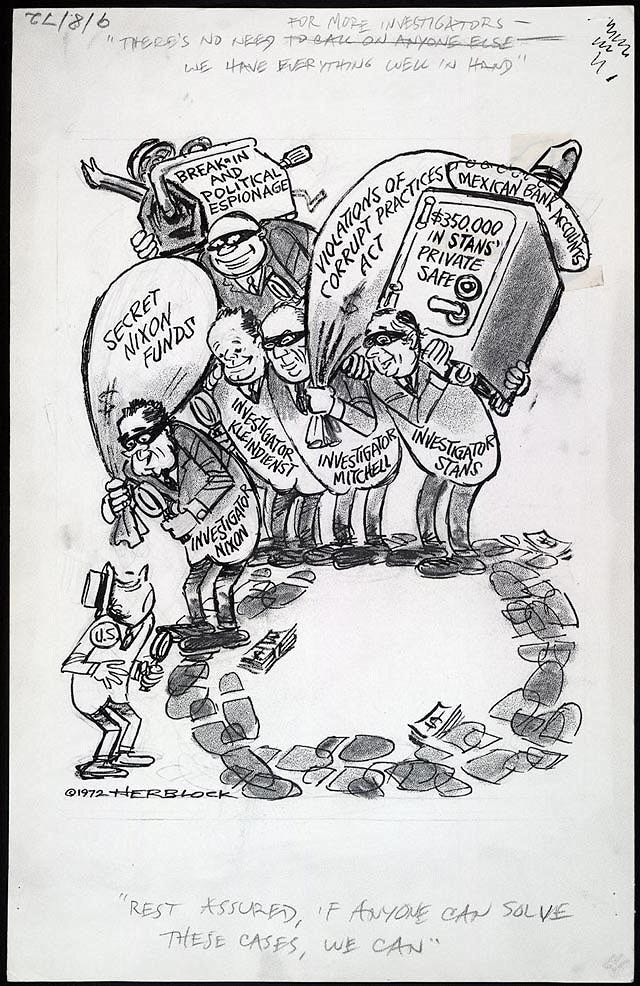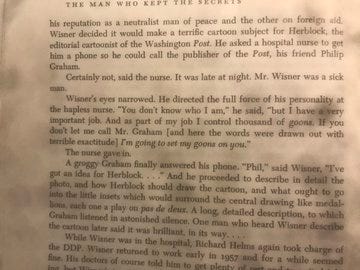Frank Wisner, the man who ran covert operations for the Central Intelligence Agency in the Eisenhower administration, was in the hospital with a 106 degree fever when he got that familiar jolt of inspiration; here, inside his head and desperate to get out, was the idea for a cartoon that would turn the hearts of men.
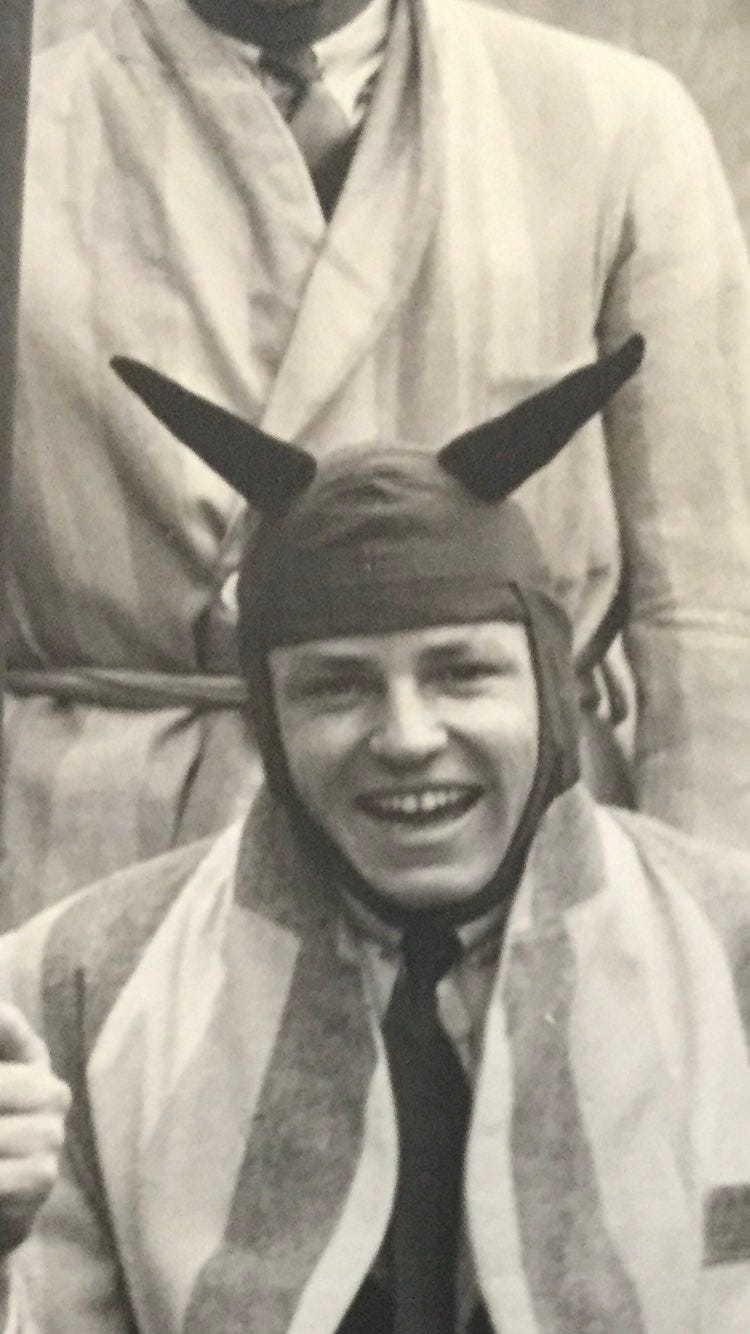
It was these same jolts of inspiration, rapid fire, that for the preceding decade allowed him direct “The Mighty Wurlitzer,” a vast and sprawling propaganda apparatus funded and managed through front organizations.
Those jolts of inspiration also seemed to, during a spectacular rise, lead to the creation of his legend, and legendary status One of his cover names was “Harold S. Whiting.”
Whiting/Wisner well: he was always the right man in the right place at the right time.
It was after midnight when he asked the nurse for a phone so he could call Phil Graham, his close friend and confidant on the society scene. Graham was publisher of the Washington Post and could use that post issue a directive to his star cartoonist, for the good of the country.
Herb Block must draw this cartoon.
Wisner—himself an amateur cartoonist and an interesting, artist’s eye and lawyer’s rhetorical style—had the whole thing drawn out in his mind; he knew how to telegraph a lot of information in a little space; conversely, he also knew how to fill up the page with empty, purple prose.
The nurse, used to dealing with unruly patients making outlandish demands, was not prepared for what came next.
“You don’t know who I am, but I have a very important job. And as part of my job I control thousands of goons. And If you don’t let me call Mr. Graham [and here the words were drawn out with terrible exactitude] I’m going to set my goons on you.”
The nurse let Wisner call Graham and explain the cartoon, as documented in Thomas Powers’ book on Richard Helms. Wisner’s idea was brilliant, someone who overheard the early morning call recalled, but unfortunately Herb Block was out on vacation.
Here’s a sample of Herb Block’s work:
Wisner was one of the men who recruited Dick Helms into the OSS; Helms, class President at Williams College, was previously a correspondent for United Press International following his graduation in 1935. He covered the 1936 Summer Olympics in Berlin and interviewed Hitler in Nuremberg after a Nazi Rally. In 1943, after a year in the Navy at Eastern Sea Front headquarters in New York, he began work for OSS’s Morale Operations Branch, the cover name for a “black propaganda” unit.
Professor Howard Becker of the University of Wisconsin defined “black propaganda” as the type
presented by the propagandizer as coming from a source inside the propagandized. "Inside” is the key term; here again the scope is the widest thinkable. A salesman may so propagandize a prospect so the salesman never appears as such; the prospect makes his decision on the basis of information furnished him by other persons whom he unwittingly identifies as fellow-prospects. The information he then self-deludingly interprets as his own. (Becker, 1949)




